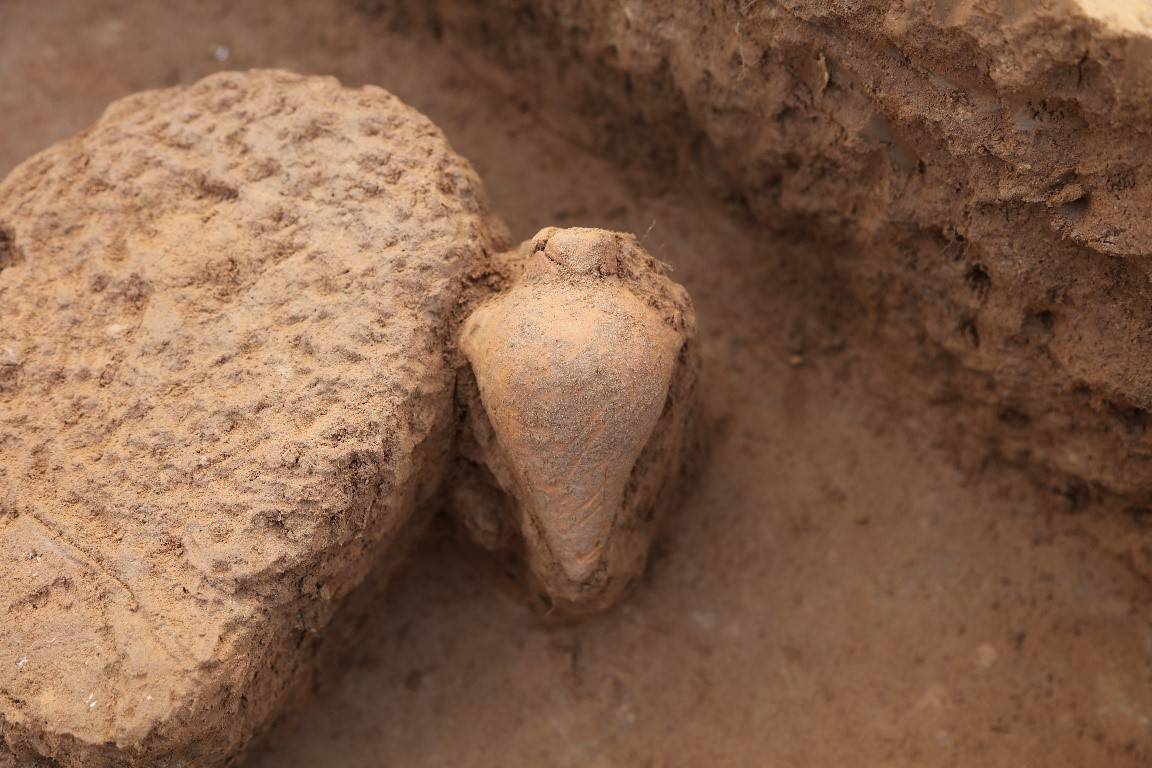
Archaeologists discover the smallest Neolithic pot of its kind in China
Archaeologists have discovered a Neolithic pot, the smallest of its kind, in the Peiligang area in Xinzheng, eastern China’s Henan Province.
This type of small-mouthed, pointed-bottomed amphora-like vessel is one of the characteristic artifacts of the Neolithic Yangshao culture.
Dating to around 7,700 years ago, it is also the oldest of its kind, pushing back the history of this form by several centuries and providing new evidence for its origins.
The bottle is about 10 cm (four inches) long, smaller than more typical examples of this style, and was found this summer during an excavation at a Neolithic burial site on the west bank of the Shuangjie river, which flows in a north-south direction through the western part of Peiligang district.
Excavations at the burial site uncovered about 20 new tombs. Very few grave goods were found, and most of them were agricultural tools, usually a combination of shovel and sickle. A handful of whetstones and stone objects were also recovered from these graves. Small pot was found in Tomb M48.

The Yangshao culture occupied the central regions of the Yellow River between 5000 and 3000 BC. Yangshao people grew crops, supplementing their diet by hunting and moving to new settlements when the land was no longer fertile. The excavation uncovered evidence of pre-Yangshao peoples living and working in Peiligang in the Late Paleolithic – ostrich egg beaded ornaments, animal bone fragments, oyster shells, pottery shards, quartz and flint lithics.
An early pottery kiln unearthed this year reveals that the Paleolithic Peiligang culture produced pottery in the region, providing new insights into the transition from Paleolithic to Neolithic cultures in the region.
Archaeologists believe the small pottery may have been used to make koji, a rice wine fermented using monascus mold (red yeast mold), a process that Paleolithic settlers of the Peiligang region had already learned.
You may also like
- A 1700-year-old statue of Pan unearthed during the excavations at Polyeuktos in İstanbul
- The granary was found in the ancient city of Sebaste, founded by the first Roman emperor Augustus
- Donalar Kale Kapı Rock Tomb or Donalar Rock Tomb
- Theater emerges as works continue in ancient city of Perinthos
- Urartian King Argishti’s bronze shield revealed the name of an unknown country
- The religious center of Lycia, the ancient city of Letoon
- Who were the Luwians?
- A new study brings a fresh perspective on the Anatolian origin of the Indo-European languages
- Perhaps the oldest thermal treatment center in the world, which has been in continuous use for 2000 years -Basilica Therma Roman Bath or King’s Daughter-
- The largest synagogue of the ancient world, located in the ancient city of Sardis, is being restored











Leave a Reply